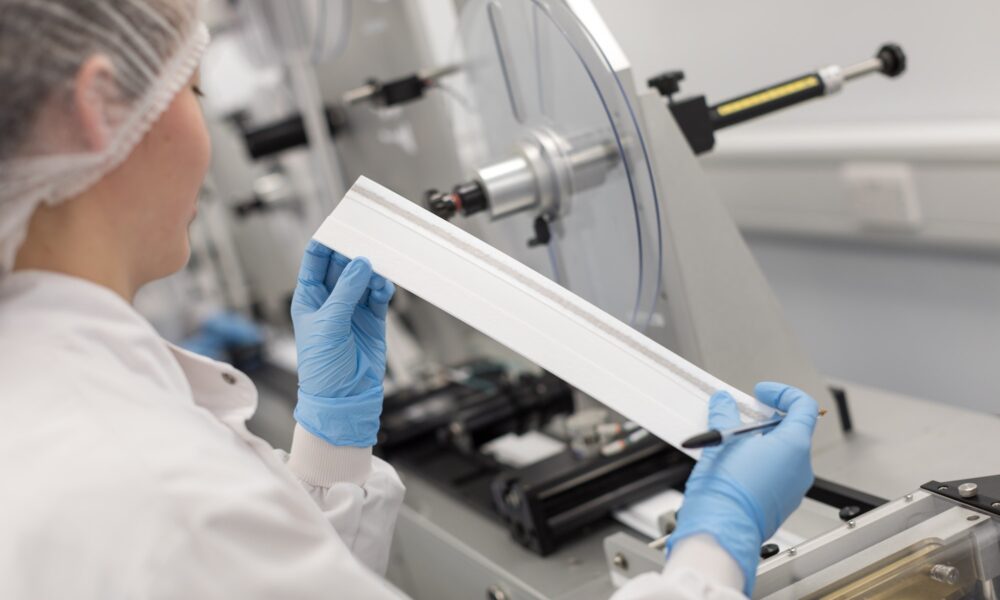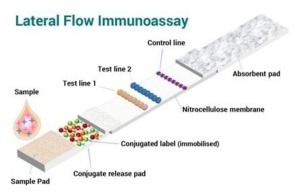Lateral Flow Test Development | Understanding The Basics

How Does This Technology Work?
A Simple Principle, Delivering Trailblazing Technology Innovations
Use of LFTs in Point of Care and End-User Healthcare Settings
Key Take-Away
Lateral Flow Tests (“LFTs”) have been available for use in industry to home-use for over 30 years. They are a simple, accurate and cost-effective solution to sometimes complicated questions, and can provide answers on important issues, that can range from “is this material contaminated?” to “am I pregnant?!”
So, How Does This Technology Work?
Lateral flow tests are based on the principle of detection of a specific marker in the sample that is being tested. Detection is typically enabled by use of antibodies specific to the target marker.
An example of this is outlined in the following diagram and video (here) where a ‘sandwich’ lateral flow test format is detailed:

In this example, antibodies – which are specific to the biomarker being detected – are conjugated to gold colloid.
If the biomarker is present, then the conjugate and biomarker will form a complex. This complex then flows through the test where, in the presence of the target biomarker, it will bind to another specific antibody which is fixed on the surface of the nitrocellulose membrane. The test will be positive if the biomarker is present, as it is bound in a ‘sandwich’ by the two antibodies, but will be negative (no test line signal) if the target biomarker is not present in the sample.
A Simple Principle, Delivering Trailblazing Technology Innovations
Many user-acceptance testing barriers for use of LFTs have been broken down globally, thanks to the worldwide approach to handling the COVID-19 pandemic. The principle of the technology is simple. However, the requirement to deliver more information from LFTs is something that has become more common in recent years.
Examples of this are quantitative test results, where the test result is not just a ‘yes’ or ‘no’ to the presence of an analyte, but can also give the end user information on how much analyte is being detected.
Additionally, multiplex lateral flow tests are able to provide results on several biomarkers from one sample. The advantage to this type of test is that the test format is simple for the end user, e.g. a single sample is collected and applied to the test device, but the test is able to provide more than one result.
Use of LFTs in Point of Care and End-User Healthcare Settings
Lateral flow tests can also be used in conjunction with other technologies and test platforms to provide broader information sets. For example, Abingdon Health’s in house PCRD lateral flow test that can be integrated into current testing protocols to give rapid readouts post isothermal amplification. LFTs can also be used to improve turnaround time for existing diagnostic procedures and processes, either by clinicians in point of care (POC) settings for urgent care and patient monitoring, or by individuals to speed up results or treatment via their GPs and healthcare services.
Key Take-Away
Lateral flow tests offer a simple, easy to use solution for many different testing scenarios. Here at Abingdon Health we have the experience to take your ideas from conception through to product realisation; with a breadth of experience to draw from, expert teams and a UK-based full-service CDMO and regulatory consultancy at your fingertips.

